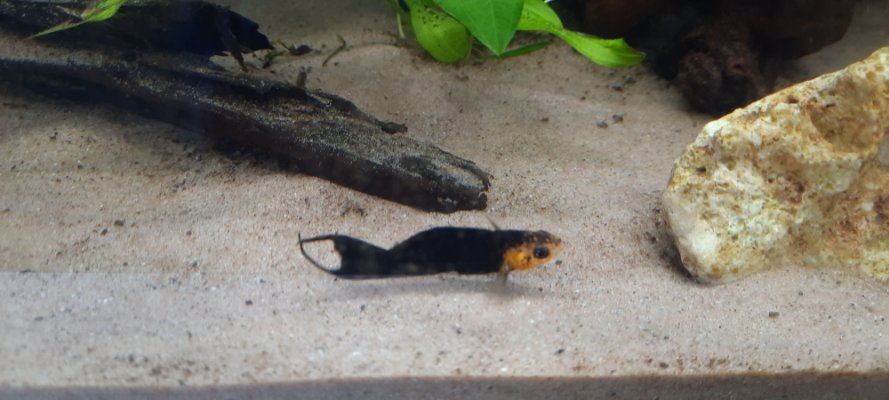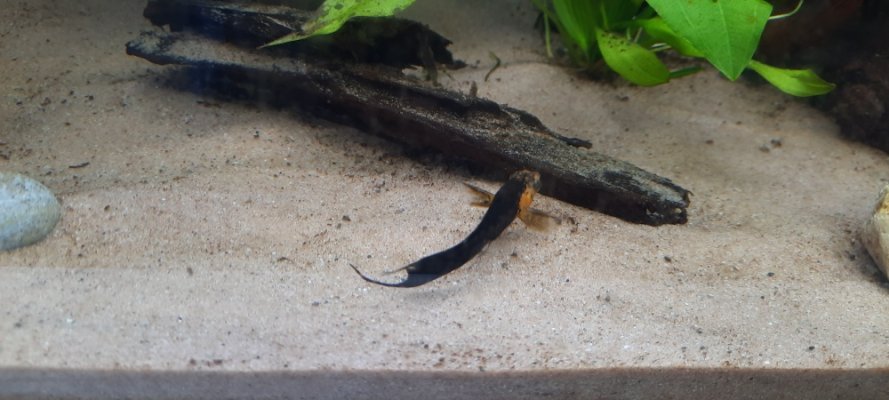I was wondering if anyone could help with this please.
I bought 3 mollies on the 24th September 2 female's and a male. Female's seem fine and very active. Male spends most of his time at the bottom of the tank, will swim a few inches up occasionally but tends to move around the bottom and settle in one place for an hour at a time. Seems quite alert and is feeding.
Amonia 0,nitrites 0,nitrate 20, ph 7.2 -.7.5, temp 26°C testing every 2-3 days and remains stable. 2 x 30% water changes a week apart,water treated with Fluval conditioner.
They are in a 105 litre tank,fishless cycle for a month and no other fish in the tank.
Filter is a Asap 700 and i also bought an airstone a few days ago.
Acclimatised the fish by leaving the bag floating on the tank for 30 minutes and then adding in tank water. Fish bought locally.
Tank has sand substrate and has been cleaning every few days with a net, also contains driftwood,stones and plants java fern, hornswort, moss ball and anubis.
Last water change was yesterday.
Has been fed tropical fish flakes and tetra micro crisps and algae wafer.
I purchased some swim bladder treatment and have dosed it every 48 hours at required amount for the past 6 days. His swimming looks okay but just been trying to rule it out. Also i didn't feed him for 2 days early on to see if that would help.
Behaviour hasn't changed and I'm at a loss at what to do next,any help would be greatly appreciated. Thank you
I bought 3 mollies on the 24th September 2 female's and a male. Female's seem fine and very active. Male spends most of his time at the bottom of the tank, will swim a few inches up occasionally but tends to move around the bottom and settle in one place for an hour at a time. Seems quite alert and is feeding.
Amonia 0,nitrites 0,nitrate 20, ph 7.2 -.7.5, temp 26°C testing every 2-3 days and remains stable. 2 x 30% water changes a week apart,water treated with Fluval conditioner.
They are in a 105 litre tank,fishless cycle for a month and no other fish in the tank.
Filter is a Asap 700 and i also bought an airstone a few days ago.
Acclimatised the fish by leaving the bag floating on the tank for 30 minutes and then adding in tank water. Fish bought locally.
Tank has sand substrate and has been cleaning every few days with a net, also contains driftwood,stones and plants java fern, hornswort, moss ball and anubis.
Last water change was yesterday.
Has been fed tropical fish flakes and tetra micro crisps and algae wafer.
I purchased some swim bladder treatment and have dosed it every 48 hours at required amount for the past 6 days. His swimming looks okay but just been trying to rule it out. Also i didn't feed him for 2 days early on to see if that would help.
Behaviour hasn't changed and I'm at a loss at what to do next,any help would be greatly appreciated. Thank you


